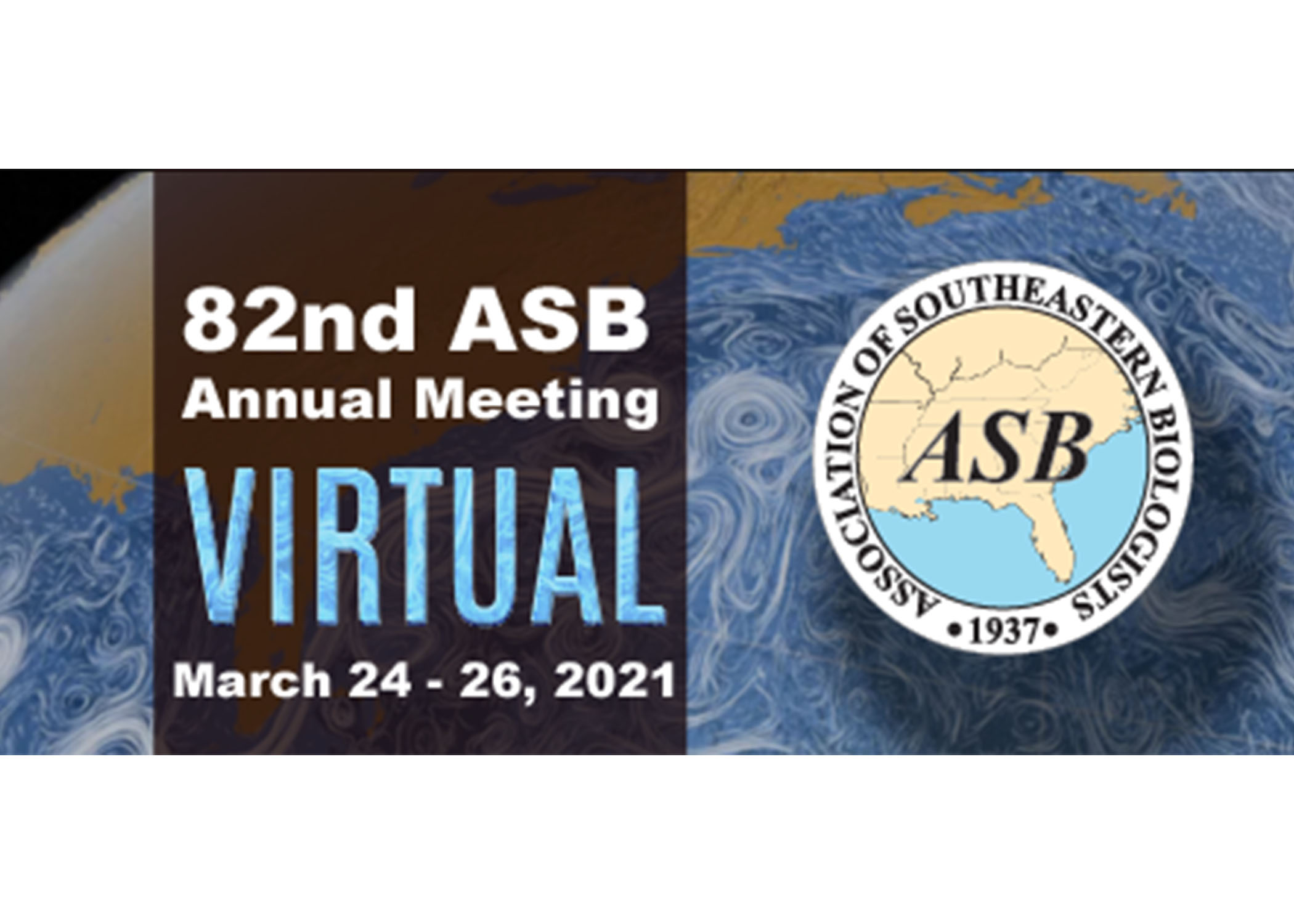
CLEVELAND, Miss.—Students at Delta State University have been engaging with their professors in undergraduate research projects, despite the challenges of performing research under pandemic conditions.
Students and faculty from Delta State’s Environmental Science program recently presented their findings during the 82nd Association of Southeastern Biologists (ASB) Annual Meeting.
The annual meeting is designed to promote research and education in the biological sciences by providing a student-friendly, networking environment.
During this year’s event, hosted virtually March 24-26, DSU undergraduate students and faculty gave three e-poster presentations for the Plant Diversity and Evolution Section:
- Hannah Pinter, a junior in Environmental Science (Wildlife concentration) presented a scientific poster and abstract for the Plant Diversity and Evolution section. Her presentation was entitled, “Mississippi’s Native Dyes” and focused on natural dyes that can be acquired from flowers, bark, leaves and cones of native plants that grow in the Mississippi Delta. Jonathan McClure, a senior in Environmental Science (Wildlife concentration), Dr. Nina Baghai-Riding, professor of Environmental Science and Biology and Catherine Koehler of the DSU Art Department co-authored the project.
- Charles Darnall, a junior in Environmental Science (General Concentration), gave a presentation entitled “Rice (Oryza sativa)—an important crop in the Mississippi Delta.” His project explored the nutritional content and texture of rice varieties that are grown milled, processed and sold in the Mississippi Delta. Darnall’s project was co-authored by Connor Jones, a senior Environmental Science (General Concentration) major, and Dr. Nina Baghai-Riding.
- Dr. Nina Baghai-Riding gave a presentation entitled “Paleonenvironmental and Taphonomic Implications of Palynological Samples from the Forest Hill Formation.” According to Baghai-Riding, this unit occurs in Smith and Yazoo Counties in Mississippi and contains exceptionally well-preserved pollen and spores. The project was co-authored by James Starnes and Jonathan Leard of the Mississippi Office of Geology; Dr. Carol Hotton with the National Museum of Natural History, Smithsonian Institution, Washington, D.C.; and Dr. Brian Axsmith, of the University of South Alabama in Mobile, Ala.
Additionally, Mr. Michael Zarske, a Fall 2020 graduate in Environmental Science (Wildlife Management Concentration) gave an oral presentation entitled, “Study on the Improved Use of Camera Traps in Wildlife Study” for the Animal Ecology B section. Dr. Eric Blackwell, Associate Professor of Biology, co-authored this project.
All four presentations received questions and positive comments throughout the conference.
ASB held its first meeting in Athens, GA, in 1937, and has met every year since with the exception of 1943, 1944 and 1945 due to WWII and 2020 due to the COVID-19 pandemic.
Affiliates of the organization include the Southern Appalachian Botanical Society (SABS), the Southeastern Section of the Ecological Society of America (SE ESA), the Southeastern Section of the Botanical Society of America (SE BSA) and the National Association of Biology Teachers (NABT).
Delta State is the only state university in Mississippi that offers a Bachelor of Science in Environmental Science.
The Environmental Science major is designed to help students learn about local, national and global issues from a scientific perspective. Students learn laboratory, field, analytical, problem-solving and other skills throughout their coursework.
DSU’s Environmental Science program offers four concentrations: General Environmental Science, Wildlife Management, and Geospatial Information Technology.
To learn more, visit www.deltastate.edu. For questions or more information about the program, call (662) 846-4240, or e-mail nbaghai@deltastate.edu.

